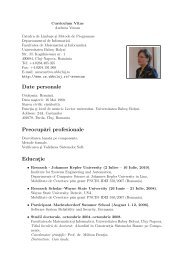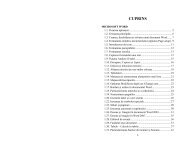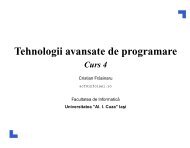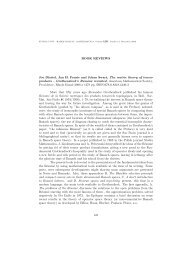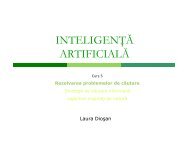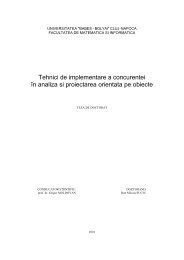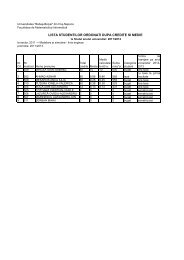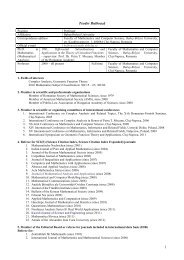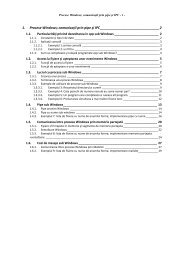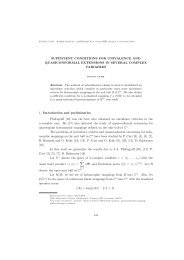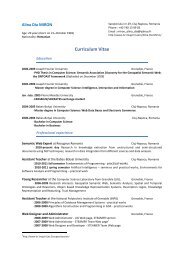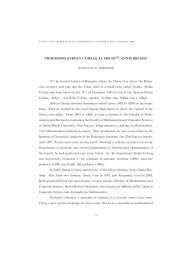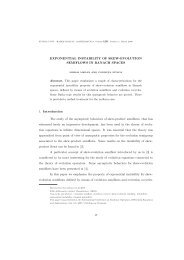CONTENTS
CONTENTS
CONTENTS
Create successful ePaper yourself
Turn your PDF publications into a flip-book with our unique Google optimized e-Paper software.
ONTOLOGY DEVELOPMENT: A SOFTWARE ENGINEERING APPROACH 213<br />
Meeting all of the above requirements qualifies ontology as a content theory and<br />
its specification calls for elaborate formal languages, namely ontology representation<br />
languages.<br />
Because there’s no ”best way” to develop an ontology there may be several ontology<br />
(is there a plural ontologies?) about the same domain. Combining them is an<br />
active research field.<br />
The high-level list of key application areas for ontology includes: collaboration,<br />
interoperation, education, and modeling.<br />
3. Developing Ontology using a Software Engineering Approach<br />
Ontology development is a hard work even with the most advanced ontology<br />
development languages, environment and methodology. Here are a few questions<br />
requiring answers on which there’s a large consensus among the domain experts:<br />
• How do we analyze, design, develop, test, maintain and support ontology to<br />
meet knowledge engineer requirements?<br />
• What ontology development methodology is the most suitable to task?<br />
• How do we combine different ontologies describing the same domain?<br />
• Since all parts of the semantic web evolve in time (ontology, ontological knowledge<br />
stored in web resources), how do we resolve the problem of knowledge<br />
maintenance?<br />
The answer is all but easy. One of the goals is to ”partially automate the processes<br />
of ontology development and maintenance by developing tools and frameworks to help<br />
extract, annotate, and integrate new information with the old one in the ontology”<br />
[6]. The paper defends the idea that we can start searching for answers by analogy,<br />
looking at the best practices in software engineering. There are several reasons for<br />
such an approach:<br />
• an ontology represents a model of a domain like software applications which<br />
represent models of the world<br />
• ontology development life cycle and object oriented analysis and design share<br />
many characteristics; both start from specific requirements, are completed<br />
through an iterative and incremental process<br />
• ontology development like software development uses a ranges of methodologies<br />
which specify how to perform a sequence of activities, supported by tools<br />
and techniques, to deliver a specific product<br />
• ontologies include classes and subclasses hierarchies similar to object oriented<br />
software engineering and similarly uses UML (Unified Modeling Language)<br />
for knowledge representation<br />
References<br />
[1] Boley, H., Tabet, S., and Wagner, G., Design rationale of RuleML: a markup language for<br />
Semantic Web rules, in: Proc. SWWS’Ol, The first Semantic Web Working Symposium, Cruz,<br />
I.E., Decker, S., Euzenat, J., McGuinness, D.L., eds., Stanford University, California, pp.<br />
381-401 (2001);



